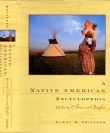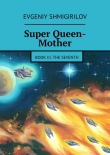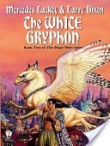
Текст книги "The British Study Edition of the Urantia Papers"
Автор книги: Tigran Aivazian
Жанр:
Религия
сообщить о нарушении
Текущая страница: 119 (всего у книги 295 страниц)
77:2.1 While this is the narrative of the origin, nature, and function of the midway creatures of Urantia, the kinship between the two orders – primary and secondary – makes it necessary to interrupt the story of the primary midwayers at this point in order to follow out the line of descent from the rebel members of the corporeal staff of Prince Caligastia from the days of the planetary rebellion to the times of Adam. It was this line of inheritance which, in the early days of the second garden, furnished one half of the ancestry for the secondary order of midway creatures.
77:2.2 ¶ The physical members of the Prince’s staff had been constituted sex creatures for the purpose of participating in the plan of procreating offspring embodying the combined qualities of their special order united with those of the selected stock of the Andon tribes, and all of this was in anticipation of the subsequent appearance of Adam. The Life Carriers had planned a new type of mortal embracing the union of the conjoint offspring of the Prince’s staff with the first-generation offspring of Adam and Eve. They had thus projected a plan envisioning a new order of planetary creatures whom they hoped would become the teacher-rulers of human society. Such beings were designed for social sovereignty, not civil sovereignty. But since this project almost completely miscarried, we shall never know what an aristocracy of benign leadership and matchless culture Urantia was thus deprived of. For when the corporeal staff later reproduced, it was subsequent to the rebellion and after they had been deprived of their connection with the life currents of the system.
77:2.3 The postrebellion era on Urantia witnessed many unusual happenings. A great civilization – the culture of Dalamatia – was going to pieces. “The Nephilim (Nodites) were on earth in those days, and when these sons of the gods went in to the daughters of men and they bore to them, their children were the ‘mighty men of old,’ the ‘men of renown.’” While hardly “sons of the gods,” the staff and their early descendants were so regarded by the evolutionary mortals of those distant days; even their stature came to be magnified by tradition. This, then, is the origin of the well-nigh universal folk tale of the gods who came down to earth and there with the daughters of men begot an ancient race of heroes. And all this legend became further confused with the race mixtures of the later appearing Adamites in the second garden.
77:2.4 Since the 100 corporeal members of the Prince’s staff carried germ plasm of the Andonic human strains, it would naturally be expected that, if they engaged in sexual reproduction, their progeny would altogether resemble the offspring of other Andonite parents. But when the 60 rebels of the staff, the followers of Nod, actually engaged in sexual reproduction, their children proved to be far superior in almost every way to both the Andonite and the Sangik peoples. This unexpected excellence characterized not only physical and intellectual qualities but also spiritual capacities.
77:2.5 These mutant traits appearing in the first Nodite generation resulted from certain changes which had been wrought in the configuration and in the chemical constituents of the inheritance factors of the Andonic germ plasm. These changes were caused by the presence in the bodies of the staff members of the powerful life-maintenance circuits of the Satania system. These life circuits caused the chromosomes of the specialized Urantia pattern to reorganize more after the patterns of the standardized Satania specialization of the ordained Nebadon life manifestation. The technique of this germ plasm metamorphosis by the action of the system life currents is not unlike those procedures whereby Urantia scientists modify the germ plasm of plants and animals by the use of X rays.
77:2.6 Thus did the Nodite peoples arise out of certain peculiar and unexpected modifications occurring in the life plasm which had been transferred from the bodies of the Andonite contributors to those of the corporeal staff members by the Avalon surgeons.
77:2.7 ¶ It will be recalled that the 100 Andonite germ plasm contributors were in turn made possessors of the organic complement of the tree of life so that the Satania life currents likewise invested their bodies. The 44 modified Andonites who followed the staff into rebellion also mated among themselves and made a great contribution to the better strains of the Nodite people.
77:2.8 These two groups, embracing 104 individuals who carried the modified Andonite germ plasm, constitute the ancestry of the Nodites, the 8th race to appear on Urantia. And this new feature of human life on Urantia represents another phase of the outworking of the original plan of utilizing this planet as a life-modification world, except that this was one of the unforeseen developments.
77:2.9 ¶ The pure-line Nodites were a magnificent race, but they gradually mingled with the evolutionary peoples of earth, and before long great deterioration had occurred. 10,000 years after the rebellion they had lost ground to the point where their average length of life was little more than that of the evolutionary races.
77:2.10 When archaeologists dig up the clay-tablet records of the later-day Sumerian descendants of the Nodites, they discover lists of Sumerian kings running back for several thousand years; and as these records go further back, the reigns of the individual kings lengthen from around 25 or 30 years up to 150 years and more. This lengthening of the reigns of these older kings signifies that some of the early Nodite rulers (immediate descendants of the Prince’s staff) did live longer than their later-day successors and also indicates an effort to stretch the dynasties back to Dalamatia.
77:2.11 The records of such long-lived individuals are also due to the confusion of months and years as time periods. This may also be observed in the Biblical genealogy of Abraham and in the early records of the Chinese. The confusion of the 28-day month, or season, with the later introduced year of more than 350 days is responsible for the traditions of such long human lives. There are records of a man who lived over 900 “years.” This period represents not quite 70 years, and such lives were regarded for ages as very long, “threescore years and ten” as such a life span was later designated.
77:2.12 The reckoning of time by the 28-day month persisted long after the days of Adam. But when the Egyptians undertook to reform the calendar, about 7,000 years ago, they did it with great accuracy, introducing the year of 365 days.
3. THE TOWER OF BABEL77:3.1 After the submergence of Dalamatia the Nodites moved north and east, presently founding the new city of Dilmun as their racial and cultural headquarters. And about 50,000 years after the death of Nod, when the offspring of the Prince’s staff had become too numerous to find subsistence in the lands immediately surrounding their new city of Dilmun, and after they had reached out to intermarry with the Andonite and Sangik tribes adjoining their borders, it occurred to their leaders that something should be done to preserve their racial unity. Accordingly a council of the tribes was called, and after much deliberation the plan of Bablot, a descendant of Nod, was endorsed.
77:3.2 Bablot proposed to erect a pretentious temple of racial glorification at the centre of their then occupied territory. This temple was to have a tower the like of which the world had never seen. It was to be a monumental memorial to their passing greatness. There were many who wished to have this monument erected in Dilmun, but others contended that such a great structure should be placed a safe distance from the dangers of the sea, remembering the traditions of the engulfment of their first capital, Dalamatia.
77:3.3 Bablot planned that the new buildings should become the nucleus of the future centre of the Nodite culture and civilization. His counsel finally prevailed, and construction was started in accordance with his plans. The new city was to be named Bablot after the architect and builder of the tower. This location later became known as Bablod and eventually as Babel.
77:3.4 But the Nodites were still somewhat divided in sentiment as to the plans and purposes of this undertaking. Neither were their leaders altogether agreed concerning either construction plans or usage of the buildings after they should be completed. After 4.5 years of work a great dispute arose about the object and motive for the erection of the tower. The contentions became so bitter that all work stopped. The food carriers spread the news of the dissension, and large numbers of the tribes began to forgather at the building site. Three differing views were propounded as to the purpose of building the tower:
77:3.5 1. The largest group, almost 50%, desired to see the tower built as a memorial of Nodite history and racial superiority. They thought it ought to be a great and imposing structure which would challenge the admiration of all future generations.
77:3.6 2. The next largest faction wanted the tower designed to commemorate the Dilmun culture. They foresaw that Bablot would become a great centre of commerce, art, and manufacture.
77:3.7 3. The smallest and minority contingent held that the erection of the tower presented an opportunity for making atonement for the folly of their progenitors in participating in the Caligastia rebellion. They maintained that the tower should be devoted to the worship of the Father of all, that the whole purpose of the new city should be to take the place of Dalamatia – to function as the cultural and religious centre for the surrounding barbarians.
77:3.8 ¶ The religious group were promptly voted down. The majority rejected the teaching that their ancestors had been guilty of rebellion; they resented such a racial stigma. Having disposed of one of the three angles to the dispute and failing to settle the other two by debate, they fell to fighting. The religionists, the noncombatants, fled to their homes in the south, while their fellows fought until well-nigh obliterated.
77:3.9 ¶ About 12,000 years ago a second attempt to erect the tower of Babel was made. The mixed races of the Andites (Nodites and Adamites) undertook to raise a new temple on the ruins of the first structure, but there was not sufficient support for the enterprise; it fell of its own pretentious weight. This region was long known as the land of Babel.
4. NODITE CENTRES OF CIVILIZATION77:4.1 The dispersion of the Nodites was an immediate result of the internecine conflict over the tower of Babel. This internal war greatly reduced the numbers of the purer Nodites and was in many ways responsible for their failure to establish a great pre-Adamic civilization. From this time on Nodite culture declined for over 120,000 years until it was upstepped by Adamic infusion. But even in the times of Adam the Nodites were still an able people. Many of their mixed descendants were numbered among the Garden builders, and several of Van’s group captains were Nodites. Some of the most capable minds serving on Adam’s staff were of this race.
77:4.2 Three out of the four great Nodite centres were established immediately following the Bablot conflict:
77:4.3 1. The western or Syrian Nodites. The remnants of the nationalistic or racial memorialists journeyed northward, uniting with the Andonites to found the later Nodite centres to the north-west of Mesopotamia. This was the largest group of the dispersing Nodites, and they contributed much to the later appearing Assyrian stock.
77:4.4 2. The eastern or Elamite Nodites. The culture and commerce advocates migrated in large numbers eastward into Elam and there united with the mixed Sangik tribes. The Elamites of 30,000-40,000 years ago had become largely Sangik in nature, although they continued to maintain a civilization superior to that of the surrounding barbarians.
77:4.5 After the establishment of the second garden it was customary to allude to this near-by Nodite settlement as “the land of Nod”; and during the long period of relative peace between this Nodite group and the Adamites, the two races were greatly blended, for it became more and more the custom for the Sons of God (the Adamites) to intermarry with the daughters of men (the Nodites).
77:4.6 3. The central or pre-Sumerian Nodites. A small group at the mouth of the Tigris and Euphrates rivers maintained more of their racial integrity. They persisted for thousands of years and eventually furnished the Nodite ancestry which blended with the Adamites to found the Sumerian peoples of historic times.
77:4.7 And all this explains how the Sumerians appeared so suddenly and mysteriously on the stage of action in Mesopotamia. Investigators will never be able to trace out and follow these tribes back to the beginning of the Sumerians, who had their origin 200,000 years ago after the submergence of Dalamatia. Without a trace of origin elsewhere in the world, these ancient tribes suddenly loom upon the horizon of civilization with a full-grown and superior culture, embracing temples, metalwork, agriculture, animals, pottery, weaving, commercial law, civil codes, religious ceremonial, and an old system of writing. At the beginning of the historical era they had long since lost the alphabet of Dalamatia, having adopted the peculiar writing system originating in Dilmun. The Sumerian language, though virtually lost to the world, was not Semitic; it had much in common with the so-called Aryan tongues.
77:4.8 The elaborate records left by the Sumerians describe the site of a remarkable settlement which was located on the Persian Gulf near the earlier city of Dilmun. The Egyptians called this city of ancient glory Dilmat, while the later Adamized Sumerians confused both the first and second Nodite cities with Dalamatia and called all three Dilmun. And already have archaeologists found these ancient Sumerian clay tablets which tell of this earthly paradise “where the Gods first blessed mankind with the example of civilized and cultured life.” And these tablets, descriptive of Dilmun, the paradise of men and God, are now silently resting on the dusty shelves of many museums.
77:4.9 The Sumerians well knew of the first and second Edens but, despite extensive intermarriage with the Adamites, continued to regard the garden dwellers to the north as an alien race. Sumerian pride in the more ancient Nodite culture led them to ignore these later vistas of glory in favour of the grandeur and paradisiacal traditions of the city of Dilmun.
77:4.10 4. The northern Nodites and Amadonites – the Vanites. This group arose prior to the Bablot conflict. These northernmost Nodites were descendants of those who had forsaken the leadership of Nod and his successors for that of Van and Amadon.
77:4.11 ¶ Some of the early associates of Van subsequently settled about the shores of the lake which still bears his name, and their traditions grew up about this locality. Ararat became their sacred mountain, having much the same meaning to later-day Vanites that Sinai had to the Hebrews. 10,000 years ago the Vanite ancestors of the Assyrians taught that their moral law of 7 commandments had been given to Van by the Gods upon Mount Ararat. They firmly believed that Van and his associate Amadon were taken alive from the planet while they were up on the mountain engaged in worship.
77:4.12 Mount Ararat was the sacred mountain of northern Mesopotamia, and since much of your tradition of these ancient times was acquired in connection with the Babylonian story of the flood, it is not surprising that Mount Ararat and its region were woven into the later Jewish story of Noah and the universal flood.
77:4.13 About 35,000 B.C. Adamson visited one of the easternmost of the old Vanite settlements to found his centre of civilization.
5. ADAMSON AND RATTA77:5.1 Having delineated the Nodite antecedents of the ancestry of the secondary midwayers, this narrative should now give consideration to the Adamic half of their ancestry, for the secondary midwayers are also the grandchildren of Adamson, the first-born of the violet race of Urantia.
77:5.2 ¶ Adamson was among that group of the children of Adam and Eve who elected to remain on earth with their father and mother. Now this eldest son of Adam had often heard from Van and Amadon the story of their highland home in the north, and sometime after the establishment of the second garden he determined to go in search of this land of his youthful dreams.
77:5.3 Adamson was 120 years old at this time and had been the father of 32 pure-line children of the first garden. He wanted to remain with his parents and assist them in upbuilding the second garden, but he was greatly disturbed by the loss of his mate and their children, who had all elected to go to Edentia along with those other Adamic children who chose to become wards of the Most Highs.
77:5.4 Adamson would not desert his parents on Urantia, he was disinclined to flee from hardship or danger, but he found the associations of the second garden far from satisfying. He did much to forward the early activities of defence and construction but decided to leave for the north at the earliest opportunity. And though his departure was wholly pleasant, Adam and Eve were much grieved to lose their eldest son, to have him go out into a strange and hostile world, as they feared, never to return.
77:5.5 A company of 27 followed Adamson northward in quest of these people of his childhood fantasies. In a little over three years Adamson’s party actually found the object of their adventure, and among these people he discovered a wonderful and beautiful woman, 20 years old, who claimed to be the last pure-line descendant of the Prince’s staff. This woman, Ratta, said that her ancestors were all descendants of two of the fallen staff of the Prince. She was the last of her race, having no living brothers or sisters. She had about decided not to mate, had about made up her mind to die without issue, but she lost her heart to the majestic Adamson. And when she heard the story of Eden, how the predictions of Van and Amadon had really come to pass, and as she listened to the recital of the Garden default, she was encompassed with but a single thought – to marry this son and heir of Adam. And quickly the idea grew upon Adamson. In a little more than three months they were married.
77:5.6 ¶ Adamson and Ratta had a family of 67 children. They gave origin to a great line of the world’s leadership, but they did something more. It should be remembered that both of these beings were really superhuman. Every fourth child born to them was of a unique order. It was often invisible. Never in the world’s history had such a thing occurred. Ratta was greatly perturbed – even superstitious – but Adamson well knew of the existence of the primary midwayers, and he concluded that something similar was transpiring before his eyes. When the second strangely behaving offspring arrived, he decided to mate them, since one was male and the other female, and this is the origin of the secondary order of midwayers. Within 100 years, before this phenomenon ceased, almost 2,000 were brought into being.
77:5.7 ¶ Adamson lived for 396 years. Many times he returned to visit his father and mother. Every 7 years he and Ratta journeyed south to the second garden, and meanwhile the midwayers kept him informed regarding the welfare of his people. During Adamson’s life they did great service in upbuilding a new and independent world centre for truth and righteousness.
77:5.8 Adamson and Ratta thus had at their command this corps of marvellous helpers, who laboured with them throughout their long lives to assist in the propagation of advanced truth and in the spread of higher standards of spiritual, intellectual, and physical living. And the results of this effort at world betterment never did become fully eclipsed by subsequent retrogressions.
77:5.9 ¶ The Adamsonites maintained a high culture for almost 7,000 years from the times of Adamson and Ratta. Later on they became admixed with the neighbouring Nodites and Andonites and were also included among the “mighty men of old.” And some of the advances of that age persisted to become a latent part of the cultural potential which later blossomed into European civilization.
77:5.10 This centre of civilization was situated in the region east of the southern end of the Caspian Sea, near the Kopet Dagh. A short way up in the foothills of Turkestan are the vestiges of what was onetime the Adamsonite headquarters of the violet race. In these highland sites, situated in a narrow and ancient fertile belt lying in the lower foothills of the Kopet range, there successively arose at various periods four diverse cultures respectively fostered by four different groups of Adamson’s descendants. It was the second of these groups which migrated westward to Greece and the islands of the Mediterranean. The residue of Adamson’s descendants migrated north and west to enter Europe with the blended stock of the last Andite wave coming out of Mesopotamia, and they were also numbered among the Andite-Aryan invaders of India.








